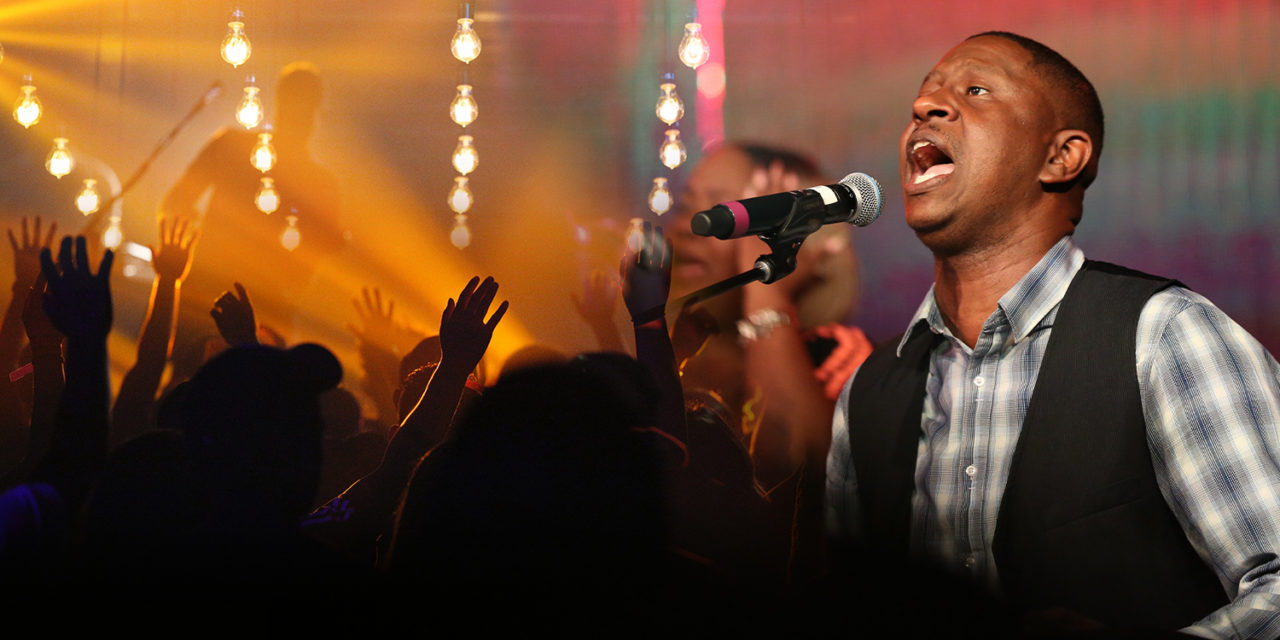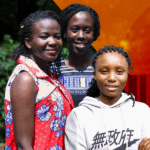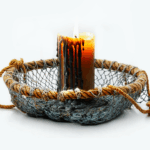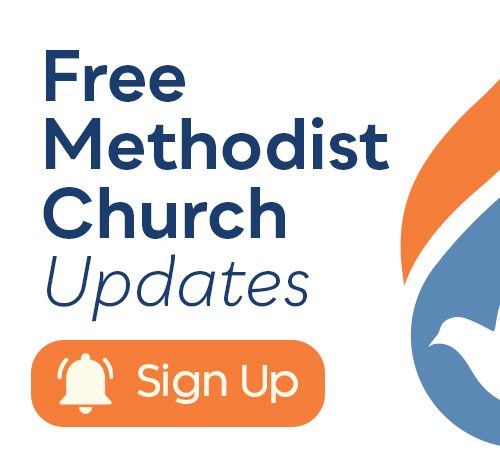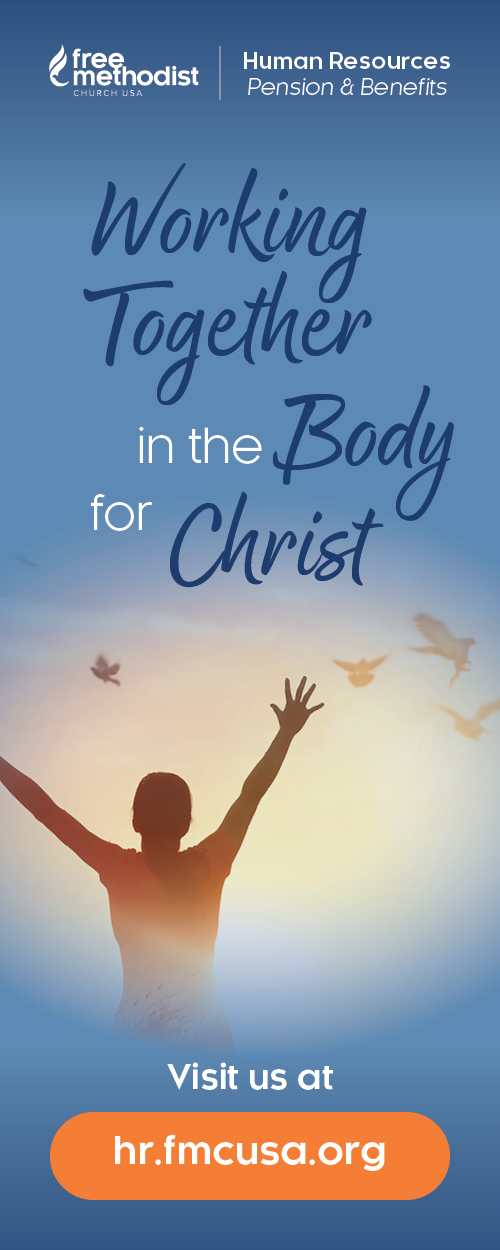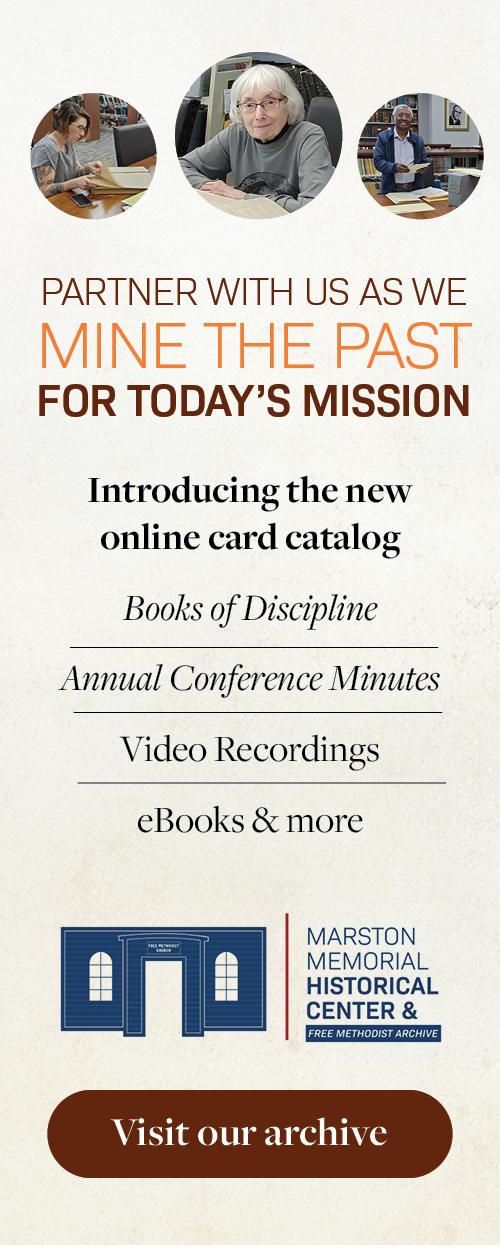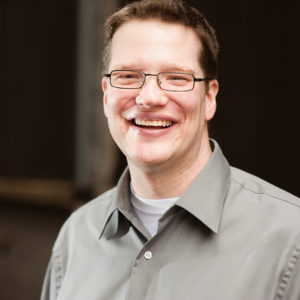
Jeff Finley
Light + Life Executive Editor
Jeff Finley is this magazine’s executive editor. He joined the Light+Life team in 2011 after a dozen years of reporting and editing for Sun-Times Media. He is a member of John Wesley Free Methodist Church where his wife, Jen, serves as the lead pastor.
by Jeff Finley
Free Methodist Church – USA worship services may not look or sound alike across the country or even in the same city. According to the 2019 Book of Discipline, Free Methodist “worship is characterized by simplicity and freedom of the Spirit,” but no specific style of worship music is mandated.
Free Methodist Church in Southern California Superintendent and Light & Life West Lead Pastor Charles Latchison said at his Long Beach, California, congregation, “we worship with a full team and band generally with strong rhythmic urban gospel praise and worship music. However, on any given Sunday, aside from music by artists such as Todd Dulaney, William McDowell, Phil Thompson or Tye Tribbett, you will also hear Elevation Worship and Maverick City. We lean charismatic, embracing the fullness of the Holy Spirit, but we do not seek to manufacture the move or ministry of the Holy Spirit.”
In Rochester, New York, “worship at Community of the Savior fits within the liturgical tradition of the Christian church, while exploring new modes of expression in music and form. Sunday worship is structured around the historic four-fold pattern of Gathering, Word, Table, and Sending Forth. The summit of Sunday worship is the weekly celebration of the Eucharist in which our spiritual lives are nourished by the real presence of Christ,” according to the church website.
In a joint response to questions from Light + Life, Community of the Savior Pastors Barb Isaman-Bushart, Doug Cullum and Katie Sawade Hall said that with guidance from the four-fold pattern and the church year, “we seek to incorporate components that best serve the biblical, theological, and formational focus of the day or season. Selections of particular musical components, prayers, or other expressions of worship serve as channels or means through which our adoration of God ascends, and God’s own formative work in our lives takes root.”
Pastors Marianne and William Peña said worship at New Vision Church in Hialeah, Florida, is “Spirit-filled and passionate. We like to set up an atmosphere where anyone can be free to worship in their own way. We come expectant that God will move in the praises of His people. We feature a wide array of musical styles, from mixes of contemporary worship to pop and even some gospel flavor. We also have some Latin fusion in the mix.”
Senior Pastor Hendrik Smidderks said worship at Northwest Free Methodist Church in Wichita, Kansas, “has a relaxed, intimate feel to it. When we were able to meet in person [before COVID-19], we frequently had young children moving about during songs, singing and dancing. Our music is blended with contemporary music and hymns. We are blessed with some truly gifted musicians who bring great talent to our worship. We also use some liturgical elements such as lectionary readings and monthly observance of the Lord’s Supper using the FM ritual. I would say we try to blend ritual and expression.”
Ebenezer Murengezi — the youth pastor of Faith Community Church in Harrisonburg, Virginia — said the church’s Swahili service is in “Swahili and English translated simultaneously and occasionally in other languages. We play predominantly Swahili songs and occasionally English songs. We mix high-paced songs and slow songs because of ages.”
Pastor David Mathis said that at Living Hope Free Methodist Church in West Unity, Ohio, “our service and preaching are upbeat and enthusiastic. I preach in front of the altar without a podium or notes. I do not want anything separating me from the congregation. Overheads are used to illustrate. The music is a mixture of old and new. Songs coordinate with the message.” Living Hope also is known for hosting concerts with Christian musicians such as Grammy and Dove Award-winning pianist Dino Kartsonakis, country artists Steve Brigmon and Doug Anderson, and the Isbell Family gospel quartet.
Reasons for Worship
Why do these congregations emphasize worship and choose specific styles and practices?
“First, we teach that learning to grow and expand in your worship expression is part of being a disciple,” Latchison said. “Principles of biblical worship are part of our annual teaching calendar. Secondly, we teach that an authentic worship expression is birthed out of a spirit of prayer. Therefore, we are always looking to help everyone grow in their confidence in the prayer ministry of a follower of Jesus Christ.”
The Community of the Savior pastors said that “the central focus of our gatherings for worship must always be the adoration and praise of God,” and they noted that worship also is formational for God’s people. “In the regular practice of worship, we are being formed as the people of God, shaped in Christlikeness, and enlivened by the presence of the Holy Spirit. Gathered worship, therefore, is the single most important formational practice in the life of the church. Whereas all other (also important) formational practices — whether small groups, Bible studies, faith formation classes, Christian education, prayer groups, etc. — reach only a percentage of the congregation, a church’s Sunday gatherings for corporate worship reach virtually the whole church community.”
According to the Peñas, New Vision’s “worship is an expression of the members and the leadership. Being in an urban community, there is a melting pot of cultures, and with that, a mix of musical styles. Our worship embodies that. We also believe that worship can set up an atmosphere of surrender, thus allowing the Spirit to move in a supernatural way and transform lives. We have experienced this type of freedom, so it is one of the staples of who we are.”
Smidderks said Northwest FMC’s worship elements reflect the culture of its Great Plains region. “Just as the reformers suffered to bring worship in the language of the people, we try to provide a worship experience that reflects the cultural language of the Plains — simplicity, welcome, inclusion.”
Murengezi said the Faith Community services “use two languages to serve first-generation and second-generation immigrants” while also hoping to connect with other immigrants and Americans. He said the first-generation immigrants like “choir types of music, and the young generation likes contemporary worship style. When it comes to the tempo of songs, mostly the African culture [songs] in churches are high-tempo and full of celebration.”
Mathis said Living Hope’s worship style fits with its rural community.
Connecting With God and Each Other
The Peñas said that “one of the biggest rewards” of worship at New Vision “has been to see people experience freedom. They are able to express themselves to the Lord in a real and authentic way, and able to get out of the box of all the ‘right’ things to say and do during worship. It is also energetic, which allows people to connect with each other through celebrating who our God is and all He has done.”
Latchison said that Light & Life West takes “time to give people an opportunity to open their hearts to the Lord during worship. It is part of what we teach and model. People have been healed — delivered from bondages and oppression. Relationships have been repaired and restored. We give time to worship in our corporate prayer services, and we set aside Sundays and special days, allowing people to soak in the presence of the Lord.”
Northwest FMC places “a strong emphasis on two things in our worship — centrality of Scripture and intergenerational inclusion,” Smidderks said. “We use Scripture for our call to worship, and we use lectionary readings to hear Scripture in our worship services. We want little children singing and praying with grandparents. We invite interaction as a means of fellowship and encountering Christ in one another.”
Mathis said Living Hope encourages “a family approach” to worship and full participation in the church. “The goal is to involve everyone in participating. Currently about 80% are involved in serving.”
At Faith Community’s Swahili service, Murengezi said, “culturally we love to dance and express our celebration outwardly, and the setting has allowed that. Also we have been able to have non-Swahili-speaking people come to our church.”
Connection with other people is not always easy during the COVID-19 pandemic. Community of the Savior pastors said they “grieve our need to worship remotely in these days as our infection and hospitalization rates from the pandemic are rising again. However, our people have remained remarkably faithful and committed to our virtual worship gatherings. With the exception of the Eucharist, we have been able to continue to provide a fairly typical Sunday experience of worship through a variety of means – Zoom, Facebook Live, livestreaming, and pre-recording. In addition, our liturgy is available every Monday after Sunday worship as an interactive booklet so that people can participate throughout the week if they miss Sunday’s premiere, and/or go back to individual components as desired. It’s not ideal, but our people have expressed great appreciation and remained connected to the church — and, we pray, to God — during the uncharted territory in which we find ourselves today.”
Experiencing Worship
The pastors emphasized the importance of getting everyone involved in worship.
“We try to emphasize inclusion over quality. We are more focused on getting people to participate in worship than providing a polished experience,” Smidderks said. “This doesn’t mean that we don’t care about quality. It simply means that when one has to give, it isn’t the participation of people. At the point where people are asked to watch while experts operate, worship is a spectator experience and not a participatory experience.”
Mathis said the pandemic has made worship participation challenging despite the combination of reduced-capacity services and Facebook Live, but he is hopeful that “with a vaccine, we will be in full evangelism mode to bring back those who need to come back and to add new members.”
Community of the Savior’s pastors said that when people come to liturgical worship services, “they don’t come to be spectators at an event at which they might be entertained — though there often are some truly entertaining moments! Rather they come to re-enact a drama in which they, as a community of faith, are the central participants.” They noted that “every form of worship this side of the new creation is in danger of blind spots, excesses, and regression – liturgical worship included.” They said worship should be more about formation than aesthetics, more about practices of the heart than purity of structure, more about relationship than ritual, and a full expression of the gathered people rather than “an exercise of the elite, the well-informed, or the clergy.”
The Peñas said that New Vision values “life-transforming worship. We come expectant for God to move, and we encourage everyone to give God their best worship on any given Sunday. The worship is liberating and unscripted. While we come expectant, we drop all preconceived notions. Instead we are available for Him to do whatever He knows we need.”
Latchison said that Light & Life West worship leader Darrel Sims and he agree that a church’s lead pastor ultimately leads worship because “ the spirit of worship is determined by the pastor’s liberty, confidence and leadership in this area. Also, as the lead pastor, I intentionally spend a lot of time nurturing and building a strong and authentic relationship with Darrel.” +

Jeff Finley
Light + Life Executive Editor
Jeff Finley is this magazine’s executive editor. He joined the Light+Life team in 2011 after a dozen years of reporting and editing for Sun-Times Media. He is a member of John Wesley Free Methodist Church where his wife, Jen, serves as the lead pastor.

